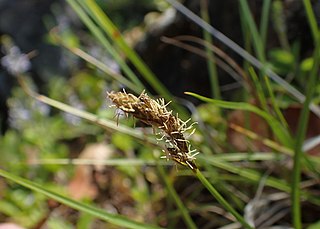
Robert Wight MD FRS FLS was a Scottish surgeon in the East India Company, whose professional career was spent entirely in southern India, where his greatest achievements were in botany – as an economic botanist and leading taxonomist in south India. He contributed to the introduction of American cotton. As a taxonomist he described 110 new genera and 1267 new species of flowering plants. He employed Indian botanical artists to illustrate many plants collected by himself and Indian collectors he trained. Some of these illustrations were published by William Hooker in Britain, but from 1838 he published a series of illustrated works in Madras including the uncoloured, six-volume Icones Plantarum Indiae Orientalis (1838–53) and two hand-coloured, two-volume works, the Illustrations of Indian Botany (1838–50) and Spicilegium Neilgherrense (1845–51). By the time he retired from India in 1853 he had published 2464 illustrations of Indian plants. The standard author abbreviation Wight is used to indicate this person as the author when citing a botanical name.
Carex caespititia is a tussock-forming species of perennial sedge in the family Cyperaceae. It is native to parts of Asia from Assam in northern India in the west to central China in the east.
Carex cirrhulosa is a tussock-forming species of perennial sedge in the family Cyperaceae. It is native to parts of the Philippines.
Carex cardiolepis is a tussock-forming species of perennial sedge in the family Cyperaceae. It is native to parts of Asia, from Afghanistan in the west to south central parts of China in the east.
Carex condensata is a tussock-forming species of perennial sedge in the family Cyperaceae. It is native to parts of Asia, from the eastern Himalayas in the north west to Thailand in the south east.

Carex cruenta is a tussock-forming species of perennial sedge in the family Cyperaceae. It is native to parts of Asia, from Pakistan in the west to south central parts of China in the east.
Carex fedia is a tussock-forming species of perennial sedge in the family Cyperaceae. It is native to parts of Asia from Tajikistan in the west through to Vietnam in the east.
Carex filicina is a tussock-forming species of perennial sedge in the family Cyperaceae. It is native to parts of Asia from Pakistan in the north west to Indonesia in the south east.

Carex haematostoma, also known as hong zui tai cao in China, is a tussock-forming species of perennial sedge in the family Cyperaceae. It is native to parts of central Asia and China.
Carex hymenolepis is a tussock-forming species of perennial sedge in the family Cyperaceae. It is native to parts of the Himalayas.
Carex lindleyana is a tussock-forming species of perennial sedge in the family Cyperaceae. It is native to parts of India, Sri Lanka and Vietnam.

Carex meyenii, commonly known as Meyen's sedge, is a tussock-forming species of perennial sedge in the family Cyperaceae. It is native to parts of Hawaii.
Carex myosurus is a tussock-forming species of perennial sedge in the family Cyperaceae. It is native to parts of Asia from India in the west to Vietnam and China in the east.
Carex obscura is a tussock-forming species of perennial sedge in the family Cyperaceae. It is native to parts of Asia from Pakistan in the west to China in the east.
Carex oligostachya is a tussock-forming species of perennial sedge in the family Cyperaceae. It is native to parts of Asia and Malesia from Assam in the west to the Solomon Islands in the east.
Carex parva is a tussock-forming species of perennial sedge in the family Cyperaceae. It is native to parts of Asia from Afghanistan to Mongolia.
Carex psychrophila is a tussock-forming species of perennial sedge in the family Cyperaceae. It is native to parts of Asia from Afghanistan in the west to southern parts of central China in the east.
Carex raphidocarpa is a tussock-forming species of perennial sedge in the family Cyperaceae. It is native to India.
Carex spicigera is a tussock-forming species of perennial sedge in the family Cyperaceae. It is native to Sri Lanka.
Carex vulpinaris is a tussock-forming species of perennial sedge in the family Cyperaceae. It is native to parts of South Asia and Central Asia including Afghanistan, Tajikistan and Pakistan westerns parts of the Himalaya.



